Articles > Geography
Trying the top The Largest Cities In Oklahoma cities on US State Largest Cities – Choose State & Number? Here are the top 10 to get you started.
1. Oklahoma City, OK (Population: 702,767)
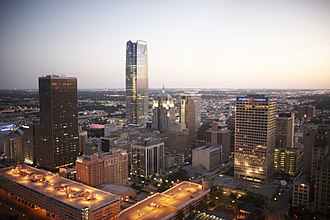
Oklahoma City, the capital and largest city of Oklahoma, is a rapidly growing hub that combines its pioneering Western spirit with modern industry and culture. Located at the crossroads of major highways, it has long served as a transportation and economic center, with energy, aviation, biotechnology, and health services leading its economy. The downtown area has been revitalized with developments like Bricktown, featuring canals, entertainment venues, and dining. Scissortail Park, completed in 2019, offers green space and cultural events, while Paycom Center hosts the NBA’s Oklahoma City Thunder. The city’s history is preserved at the National Cowboy & Western Heritage Museum, while the Oklahoma City National Memorial stands as a place of reflection. Oklahoma City also celebrates its agricultural roots with the annual State Fair and horse shows, attracting visitors nationwide.
Interesting Fact: Oklahoma City is home to the USA Softball Hall of Fame Stadium, the annual host of the Women’s College World Series.
2. Tulsa, OK (Population: 411,894)
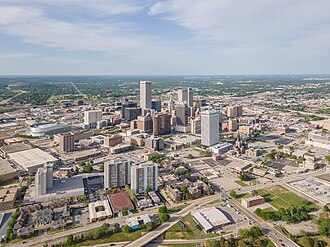
Tulsa, nestled along the Arkansas River, has transformed from an oil industry powerhouse into a dynamic city with a thriving cultural and economic landscape. Known for its Art Deco architecture, much of it built during the oil boom of the early 20th century, the city’s skyline remains a point of pride. Gathering Place, a nationally acclaimed riverfront park, offers recreational trails, playgrounds, and performance spaces. Tulsa’s economy is diverse, with aerospace, energy, finance, and technology playing major roles. The Philbrook and Gilcrease Museums highlight the city’s dedication to art and history, while Cain’s Ballroom and the Tulsa Theater underscore its deep ties to music. Tulsa also honors its Native American heritage, with the city situated within the historic territory of several tribes. Today, it continues to balance its small-town charm with the amenities of a major metropolitan center.
Interesting Fact: Tulsa’s Greenwood District, once known as “Black Wall Street,” was a center of African American business and culture before the 1921 Tulsa Race Massacre.
3. Norman, OK (Population: 130,046)
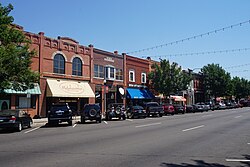
Norman, just south of Oklahoma City, is a vibrant community best known as the home of the University of Oklahoma. The university anchors the city’s identity, drawing students, educators, and sports fans from across the nation. OU’s football program at Gaylord Family Oklahoma Memorial Stadium regularly brings more than 80,000 fans into the city, turning game days into statewide celebrations. Beyond athletics, Norman is also a global hub for meteorological research thanks to the National Weather Center, which collaborates with NOAA and other agencies on cutting-edge climate and storm prediction. The city balances education, culture, and commerce, with thriving neighborhoods, local businesses, and community festivals. Norman’s residents enjoy outdoor spaces like Lake Thunderbird State Park and cultural attractions such as the Fred Jones Jr. Museum of Art. With a strong academic presence and quality of life, Norman remains one of Oklahoma’s most attractive places to live.
Interesting Fact: Norman hosts the annual Norman Music Festival, a free multi-day event that draws thousands of visitors and performers from around the world.
4. Broken Arrow, OK (Population: 119,194)
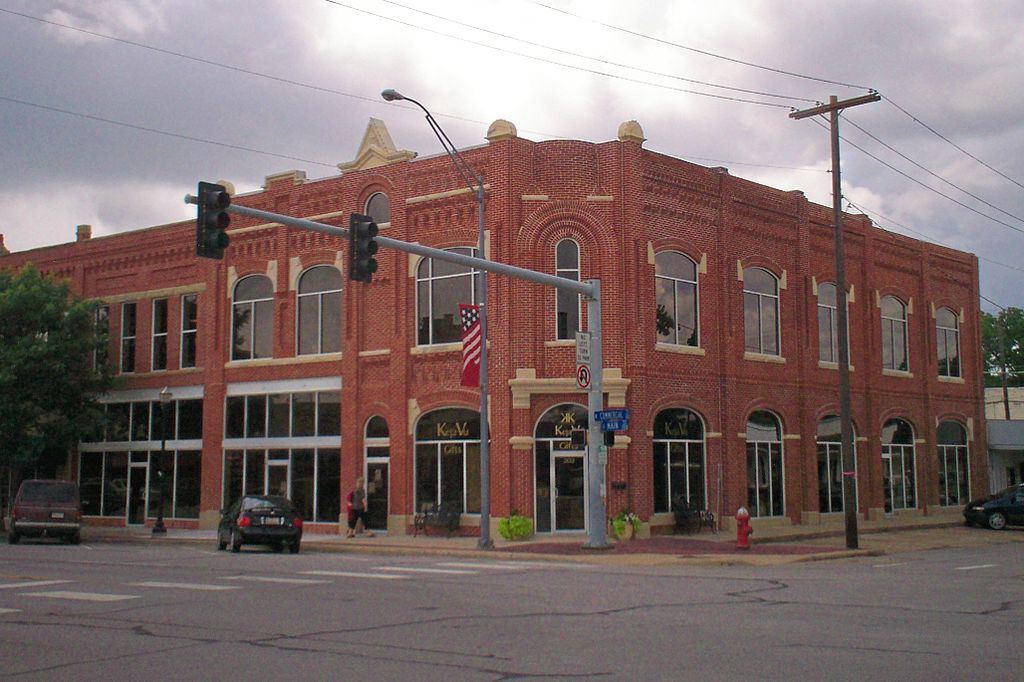
Broken Arrow, part of the Tulsa metropolitan area, has grown from a quiet farming community into one of Oklahoma’s largest and fastest-growing cities. Its economy has expanded with aerospace, manufacturing, retail, and healthcare, while its strong school system continues to attract families. Downtown’s Rose District has undergone major revitalization, now serving as the cultural heart of the city with restaurants, shops, art galleries, and seasonal events. Residents enjoy community spaces such as the Performing Arts Center, the Ray Harral Nature Park, and numerous sports complexes. Broken Arrow embraces its history with museums and heritage centers that highlight its Native American and pioneer roots. With convenient access to Tulsa and a strong sense of identity, Broken Arrow balances suburban living with a vibrant cultural core. The city’s ongoing growth makes it one of Oklahoma’s most appealing destinations.
Interesting Fact: Broken Arrow’s name comes from a Creek Nation settlement that was relocated to the area during the Trail of Tears.
5. Edmond, OK (Population: 98,103)
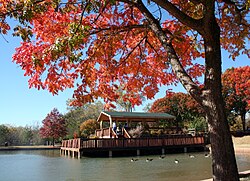
Edmond, located just north of Oklahoma City, is one of the state’s most desirable suburban communities, known for its excellent schools, quality of life, and growing business sector. The city is home to the University of Central Oklahoma, which adds a strong academic and cultural presence through performances, lectures, and sporting events. Edmond has invested heavily in parks and recreation, with Arcadia Lake offering boating, fishing, and trails. Public art is a major feature, with sculptures and murals throughout the city reinforcing its creative spirit. Its economy includes healthcare, technology, and retail, while many residents commute to Oklahoma City for work. Edmond prides itself on its family-friendly atmosphere and community events, such as the annual LibertyFest, one of the largest Fourth of July celebrations in the region. With rapid growth and a strong civic identity, Edmond remains a cornerstone of central Oklahoma living.
Interesting Fact: Edmond was the site of Oklahoma’s first public schoolhouse, which opened in 1889 soon after the Land Run.
6. Lawton, OK (Population: 90,245)
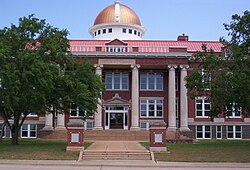
Lawton, located in southwestern Oklahoma, is best known as the home of Fort Sill, a historic U.S. Army post established in 1869. Fort Sill continues to serve as an active training base, shaping the city’s economy and identity. Lawton is surrounded by the scenic Wichita Mountains, offering outdoor recreation at the Wichita Mountains Wildlife Refuge, where visitors can hike, rock climb, and see bison and elk. The city’s economy blends military, manufacturing, and healthcare, while Cameron University contributes to its educational opportunities. Lawton also hosts cultural attractions, such as the Museum of the Great Plains, which highlights the region’s Native American and frontier history. Community life includes annual fairs, parades, and festivals that bring together its diverse residents. With its mix of military heritage, natural beauty, and cultural offerings, Lawton remains a vital part of Oklahoma’s character.
Interesting Fact: Geronimo, the famed Apache leader, is buried at Fort Sill in Lawton.
7. Moore, OK (Population: 63,470)

Moore, situated between Oklahoma City and Norman, is a fast-growing suburban community that has developed into one of the state’s most recognizable cities. While Moore is well-known nationally for being struck by devastating tornadoes, it has shown remarkable resilience and dedication to rebuilding stronger each time. Its neighborhoods feature modern schools, shopping centers, and parks, making it attractive to families. The city has invested in infrastructure and community facilities, including the Moore Warren Theatre, one of the largest cinemas in the region. Moore’s proximity to both Oklahoma City and Norman makes it an ideal residential location for commuters. Despite challenges, Moore has cultivated a strong sense of community, with residents committed to growth and recovery. Today, Moore stands as a symbol of resilience and progress in central Oklahoma.
Interesting Fact: Moore has been struck by two of the most powerful EF5 tornadoes ever recorded, in 1999 and 2013.
8. Midwest City, OK (Population: 58,086)
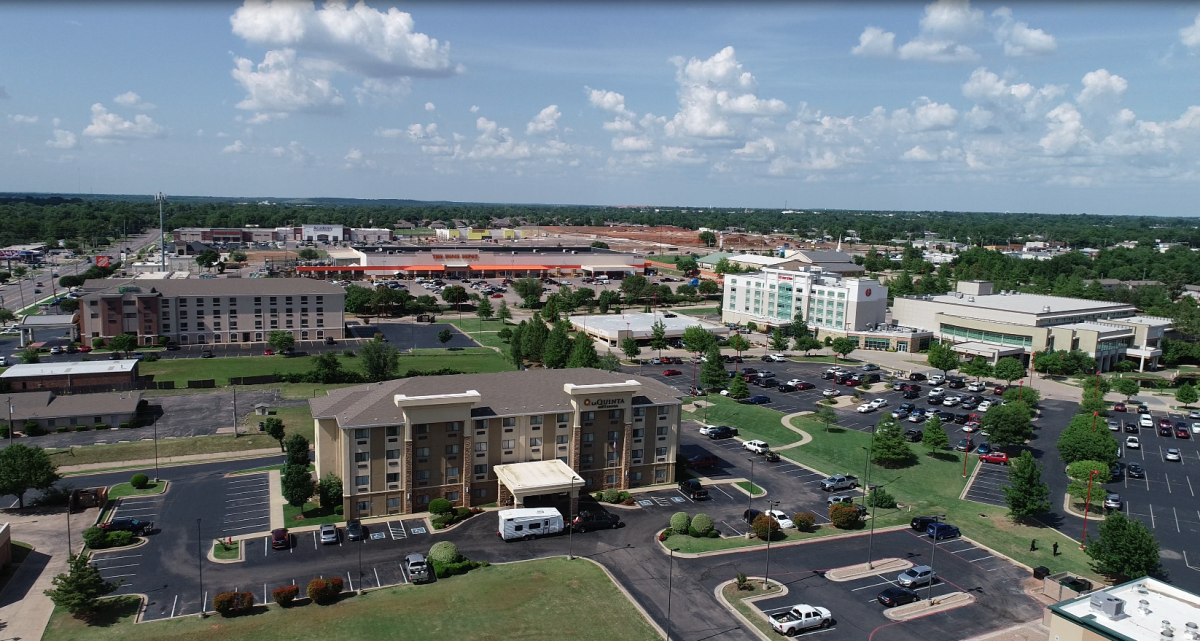
Midwest City, located just east of Oklahoma City, was founded during World War II as a community for workers at the nearby Tinker Air Force Base. The base remains the city’s largest employer and central to its identity, providing jobs in aviation, logistics, and defense. Midwest City has grown into a suburban hub with shopping, healthcare facilities, and schools that serve the eastern Oklahoma County region. The city continues to revitalize its town center, with parks, walking trails, and community spaces improving quality of life. Regional attractions include the Reed Conference Center and nearby Lake Stanley Draper. Midwest City values its military heritage, with memorials and museums honoring veterans and service members. Its combination of military roots, suburban lifestyle, and economic stability keeps it an important part of the Oklahoma City metro.
Interesting Fact: Midwest City was named after the Midwest Air Depot, the original name for Tinker Air Force Base.
9. Enid, OK (Population: 50,577)
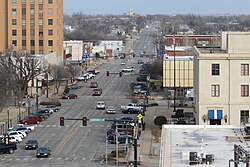
Enid, located in north-central Oklahoma, is known as the “Wheat Capital of the United States” due to its role in the region’s agricultural economy. The city’s grain elevators dominate its skyline, reflecting its strong ties to farming and food production. Enid is also a cultural hub, home to the Gaslight Theatre, Enid Symphony Orchestra, and multiple museums, including the Cherokee Strip Regional Heritage Center. Its economy includes energy, manufacturing, and healthcare, supporting a growing population. Outdoor enthusiasts enjoy Meadowlake Park and local trails, while seasonal events like the Enid Lights Up the Plains holiday celebration bring the community together. Enid also maintains historic districts with preserved architecture from the late 19th and early 20th centuries. With its agricultural roots and cultural amenities, Enid balances small-town charm with regional importance.
Interesting Fact: Enid is home to one of the largest grain storage facilities in the world, often referred to as “the white elevators.”
10. Stillwater, OK (Population: 49,525)
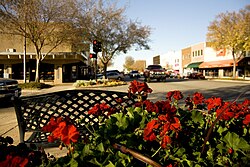
Stillwater, located in north-central Oklahoma, is most famous as the home of Oklahoma State University, whose influence shapes much of the city’s culture, economy, and energy. OSU contributes not only through education and athletics, but also through research, business development, and cultural programming. Boone Pickens Stadium draws large crowds for college football, while Gallagher-Iba Arena hosts basketball and other events. Stillwater’s economy includes aerospace, agribusiness, and technology, while its downtown features local shops, music venues, and restaurants. The city also has a reputation as the birthplace of Red Dirt music, a genre blending country, rock, and folk. Outdoor recreation is available at nearby lakes and parks, making it attractive to students and families alike. Stillwater continues to thrive as a blend of college town atmosphere and economic innovation.
Interesting Fact: The Red Dirt music genre, pioneered by artists like Bob Childers and Cross Canadian Ragweed, originated in Stillwater.




